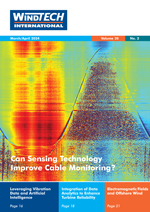The U.S. Department of Energy (DOE) has shared findings from the Atlantic Offshore Wind Transmission Study, a two-year analysis of transmission options to support offshore wind energy deployment along the Atlantic Coast of the USA.
While initial projects will connect individually to the onshore grid, the study suggests that after 2030, strategically linking some offshore wind energy projects via offshore transmission networks could lower electricity production costs and improve U.S. grid reliability. This approach aims to reduce dependence on fossil fuels while minimising disruptions to oceanic ecosystems.
Conducted by researchers from DOE’s National Renewable Energy Laboratory and Pacific Northwest National Laboratory, the study explored various potential scenarios for offshore transmission along the Atlantic coast of the United States. It evaluated the costs and benefits of each pathway, considering grid reliability, resilience, and potential cable routes that accommodate environmental and siting constraints.
The study suggests that expanding offshore wind energy presents an opportunity to enhance transmission capacity in the East Coast’s power system. This interconnectedness could supply energy to high-demand areas, alleviate grid congestion, enhance system reliability, and reduce costs for consumers. Additionally, it could potentially decrease generation from fossil-fuel-powered units by 5.5–9.2 Terawatt-hours per year by 2050.
According to the study, establishing transmission networks by connecting offshore wind platforms could outweigh the costs compared to each project having its own isolated transmission connections.
The report also identifies possible transmission corridors while considering ocean co-use constraints such as military zones, shipping channels, marine protected areas, and artificial reefs. However, the actual points of interconnection should be determined through transparent processes, and the locations used in the study are not intended to be precise recommendations.
Based on the deployment target of 85 GW of offshore wind off the Atlantic Coast by 2050, the study recommends phasing the construction of offshore transmission to reduce development risks. It also suggests early adoption of high-voltage direct current (HVDC) technology standards to support new transmission and facilitate future network expansion.









